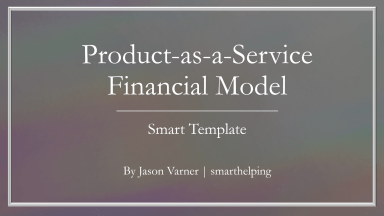
Last version published: 21/03/2023 09:17
Publication number: ELQ-52716-12
View all versions & Certificate

Product-as-a-Service (PaaS) - Strategic Business Modeling Planner Excel Model
Transition to a subscription model instead of a direct sales model with this financial planning template for a PaaS business.
Further information
Test the feasibility of selling a subscription to your products rather than directly selling them.
Up to 3 pricing tiers.





















